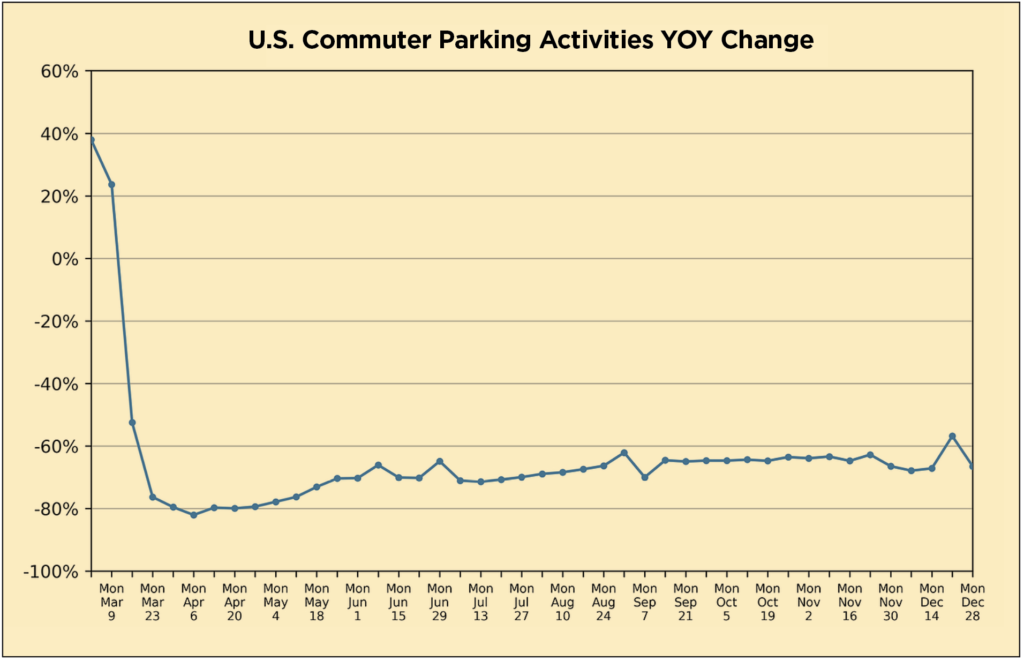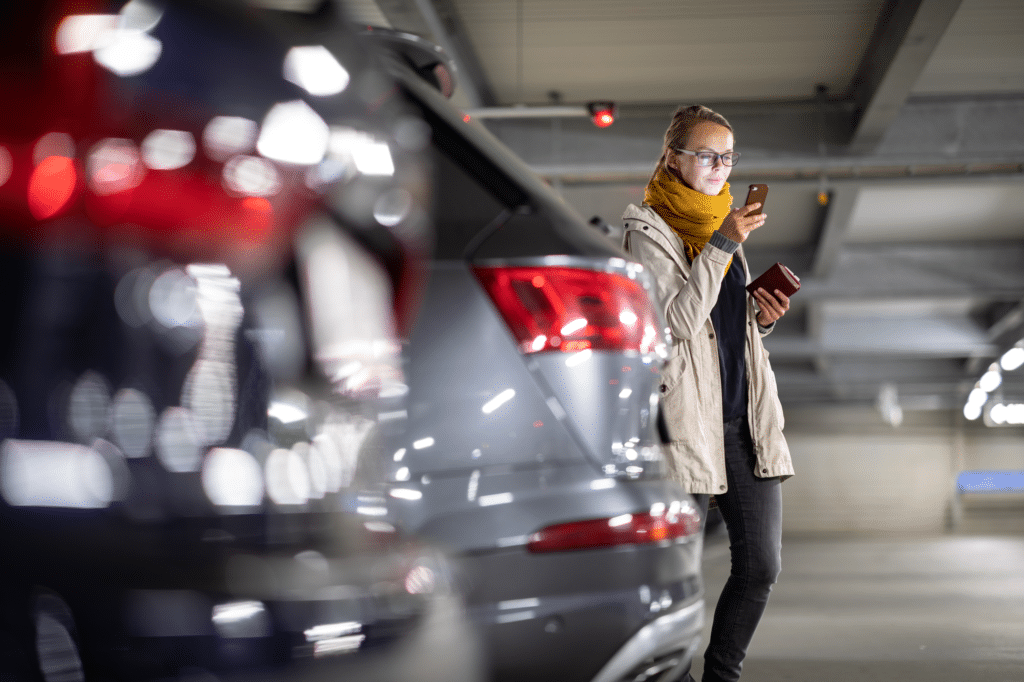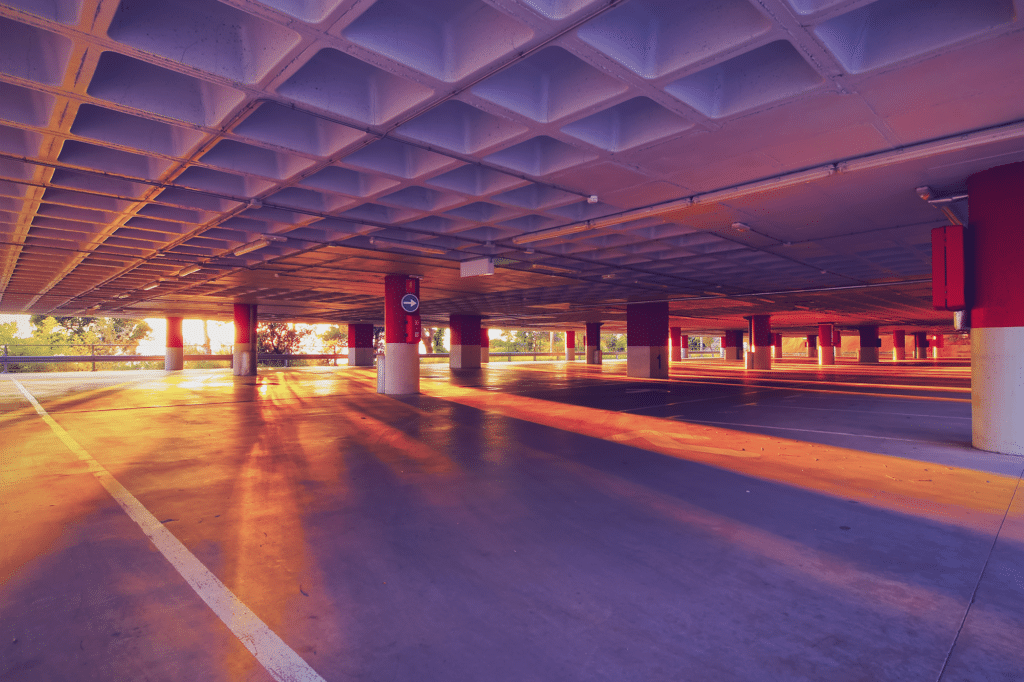Why asset owners and managers should prioritize excellent customer service now more than ever—and how to do that for different types of parkers and parking operations.

As the COVID crisis continues winding down, the parking industry has been given a second chance to make a great first impression with the customers and institutions we support.
As offices, schools, restaurants, venues, and tourist attractions continue reopening and welcoming back workers, students, and guests, parking operations will once again fill up with cars. We have an opportunity to make the most of drivers’ fresh perspective—and we can do that by reframing the understanding of parking. It’s no longer a commodity; today, parking is a service.
Changes to Expect
In the next two years, demand for parking will rise, not from the lows of 2020 but from the highs of 2019.
Even if work-from-home and/or hybrid work arrangements is a lasting trend beyond what we’re seeing now, long-term lease agreements mean businesses have strong financial incentives to bring workers back to -already-rented spaces. Combine that with the benefits of in-person collaboration, and companies have compelling reasons to call workers back to the office on a full- or part-time basis.
But the future will not look like the past. Work-from-home offers managers greater flexibility to maximize the value of their real estate commitments. With flex scheduling, 50 employees can work in an open bullpen safely slotted for 25. Workers will continue to return, but their needs will be different, and as we’ve seen already, smart parking operations will be prepared to support those workplace adaptations.
We are also seeing a great deal of pent-up demand for concerts, live sporting events, entertainment, and anything that allows us to come into contact with others. As proven in the second half of 2021, while the “new normal” life may look different, people are antsy and happy to get out and about.
On top of the re-entry of existing drivers into the parking world, by some forecasts, next year, there will be almost 10 percent more licensed drivers in the U.S. than there were in 2019—about 234.5 million people total. Whether these drivers rent, share or buy cars, we can reasonably expect more traffic on the roads and an increased need to park when they arrive at their destinations.
Searching for Seamless
As veteran parkers continue returning to regular driving and new drivers begin parking for the first time, parking facilities that prioritize service will be in an ideal position to make great “first” impressions. And a continued emphasis on service will convert first impressions into lasting loyalty. We have to adapt a PaaS (Parking-as-a-Service) mentality. This critical methodology shift is true for operations in many sectors: university, municipality, commercial, airport, or residential.
What does PaaS and “good service” mean for parking operations?
While touchless has been the buzzword for quite some time and safety and sanitation will continue to be a priority for years to come, the focus in parking now should be on “seamless.” Touchless is safe. Seamless is easy. We need to optimize for ease in every step of the consumers’ process.
For example, touchless parking experiences that rely on smartphone apps are excellent from a safety standpoint but thinking in terms of touch alone isn’t enough. But many apps do not function in smartphone operating system backgrounds and can result in a traffic jam if a parker needs to actively access their phone app at every entry and exit. Apple is notoriously stringent in iOS.
A similar seamless app experience employs technology that automatically vends the gate regardless of the smartphone app’s status. This speeds up the process not just for the individual customer but also for those in line behind them. Minimizing that wait and getting parkers home sooner makes our customers’ lives better.
How Can We Adapt?

Every community and every parking operation has different needs, opportunities, and resources so no one solution will fit everyone. As an asset owner, manager, and consultant, I have been using and evaluating several products and services that could add to the best possible seamless customer service.
The good news is that there is a lot to choose from. Despite the hard times that have hit us all, the bad news is that now is the time to commit time, money, and resources to upgrade operations to the PaaS reality.
Parking operations don’t have to overextend to upgrade. Develop a phased PaaS plan focusing on the items with the biggest bang for your operation’s buck first and then tie future items to clear revenue marks. As the pandemic switches to a lingering endemic, we are in for a bumpy return. Politicians will likely continue hitting the economic stop and go buttons as infections fluctuate. But over time, oscillations will flatten, and the situation will improve at a steady pace. A thoughtful plan will take fluctuations into account and spend some of the capital that comes in at the high points, so by the time COVID is in the rearview, the parking operation has been fully optimized for a service mentality.
What Can We Do?
There are many ways to optimize the parking experience; the magic mix of services will differ by the type of parker. What is most valuable for a monthly business parker (or to a company subsidizing parking for employees) might not be the same as what a tourist family would want.
Monthly Parkers
Monthly parkers are the bread and butter of many parking operations and there is much that can be done to improve their experience:
Seamless Interactions: If you still require monthlies to stop at a gate, roll down their windows, and wave a plastic card while a line forms behind them, now is the time to reevaluate. Consider upgrading to a gateless, LPR, Bluetooth or app-based remote access system.
Pre-COVID, one of my operations, a premium fully staffed office location, was upgraded with LPR. We retained the HID passkey as a backup, offering reassurance in the rare event of a misread (2 to 5 percent). Staff keep their eyes on the gates, so they can quickly resolve those issues. Another operation is implementing a Bluetooth app-based approach that takes care of new customer sign-up and payment processing. Another cost-effective option may be to remove gates and use a roving LPR camera to monitor access.
Pricing Flexibility: Workers are likely to start returning to offices in fits and starts. Offering flexible monthly packages, such as a flex pass for 10 days of parking a month at two-thirds the standard monthly rate, will provide savings to workers returning part-time and generate a larger rate of return.
Unstaffed Concierge Services: It’s time to think about services that we can offer to provide value to our monthly parkers. For unstaffed locations, Amazon lockers and electric charging stations can be easily implemented.

Though Amazon will not pay rent, devoting space in a lobby or area by a pedestrian entrance to an Amazon locker can add value for parkers.
Reports predict electric vehicles (EVs) will comprise 10 percent of global passenger vehicle sales by 2025, so now is the time for parking operations to begin offering charging operations. Level 2 slow charging will be sufficient for most monthly parkers who park for a full workday. At my operations, monthly parkers receive five hours of free charging as part of their parking pass (and the option to pay for more).
Full Service Staffed Concierge: Fully staffed locations should consider upping their game to offer concierge services that include package acceptance, dry cleaning, and meal delivery.
Parking attendants can accept packages on behalf of monthly parkers and place packages in the car for parking customers as they exit, communicating with the parker via text to ensure the process runs smoothly.
The ability to drop off a bag of dirty laundry in the lobby on the way into work and pick it up from the parking attendant would be a huge time saver for the typical office worker. Coordinating this is as easy as making an arrangement with a reliable dry cleaning operation. Parking operators can charge a rent to the dry cleaner for access to customers and/or charge consumers a small handling fee.
During the worst days of the pandemic, my company initiated a free meal service for anyone in need, called Heart of the Park. Many of our monthly customers who worked in nearby restaurants and entertainment venues were suddenly out of work and in need of support. We raised money from the community, partnered with a restaurant, and the garage became the distribution point for chef-made meals. After a few months, demand for free meals waned, but people started asking to buy meals—and RocketGourmet, was born. Now, we are working with great restaurants that prepare meals designed to travel and be finished at home. The parking garage is the pickup point, and so far, customers are thrilled.
Payment and Account Management: If your payment and account management process is not as simple and effective as paying for an order on Amazon, now is the time to upgrade. This task often wastes management time and frustrates customers.
There are many options available, including services from most PARCs manufacturers. I work with two -system-agnostic SaaS products that can pair with most PARCs systems.
Communication: In an era of simple email marketing software and sophisticated smartphones, many parking organizations continue to send poorly worded PDFs; I frequently hear complaints about this from colleagues from outside the industry. This failure has real costs: I personally know several corporate leaders who cite poor parking management as a factor in the decision to relocate offices. To optimize customer and partner communications, keep them brief, make sure they are well-written, and consider newsletter services that are easy to use and provide analytics reporting so you know what works.
Transient Parkers
According to Smarking’s Business Industry Benchmark, U.S. commuter parking activity was ~68 percent down, year-over-year, at the end of 2020 but up 12 percent up from the late-March beginning of the pandemic.

By summer 2021, we saw tourism and other social activities increase. Restaurants, entertainment, and sports venues pulled out all the stops as they welcomed customers back and parking operations. Parking operations should be prepared for more of this and more people going back to regular life activities.
Seamless Access: Transient parkers will benefit from minimized parking touchpoints. Some suppliers offer Bluetooth-enabled upgrades that create swift and easy touchless entry, exit and payment. When deciding on a product, consider who has more customers interested in what your operation offers.
Not only are customers willing to try Bluetooth access and payment, but once they adopt the technology, they continue to use it. Don’t be surprised if customers start to avoid operations that fail to keep up with the competition to make the gated experience as seamless as possible.
White label and branded operator options also exist; when considering these, try out the apps to understand how easy (or not) they are for parkers to download and navigate.
Special Rates & Community Partnerships: Money talks for transient parkers, so deals, especially when tied to a local activity or venue, are welcome. Plus, partnerships with local businesses are great for marketing and community relations.

Online Booking: Life happens online and for transient parkers, online booking can be a part of a seamless and touchless parking experience. An easy-to-navigate online tool is key to a pleasant booking experience; if parkers find it easy to book and pay for a spot, they will turn into repeat customers. There are many great providers in the space. I recommended integrating with several as each appeal to different consumers and allowing the parking customer to use the app of choice makes their experience that much richer.
Dynamic Pricing: I have utilized several dynamic pricing engines in different facilities. As transients emerge, dynamic pricing is a terrific way to attract new customers. If you are worried about cannibalizing your existing customer base, you can relax. The statistics show that aggregator-based dynamic pricing brings in the value shopper, while those who are willing to pay the full price are looking at factors beyond price. Most importantly, the increased traffic at flexible online rates generates higher revenues than less traffic at a fixed price. Combined with a robust PaaS approach, the result is that customers drawn in by discount price at a slow time will return to pay higher rates at a busy time.
PEV Fast Charging: Several big EV companies are expanding their paid charging networks and are willing to sign long-term leases for parking spaces. They collect the revenue and parking operations collect the rent with the bonus of increased traffic—and many states have subsidies to offset the initial costs associated with charging. This model will continue to evolve, but now is the time for parking operations to begin laying the infrastructure.
The Curb
There is a lot of exciting research and work being done about managing and monetizing the public curb space to achieve the highest and best use for this valuable space. As we’ve seen a lot as curb use and strategy has changed the past 18 months, thoughtful planning can reduce traffic congestion and improve the consumer use experience. There is too much to mention here, but I encourage you to look into Urban Freight Lab at the University of Washington and the Open Mobility Foundation. Also, look into the automated kiosk TNC zones employed by the City of Las Vegas in the downtown district. The zones are just a small piece to emerge from the city’s well-thought-out 2016 Master Mobility Plan.
These sources will provide some excellent fodder for rethinking your curb priorities and offer some excellent insight into incorporating top-notch service into congestion-busting measures.
The pandemic has acted as an accelerant for forces and evolutionary trends that were already in play before 2020 blindsided our best-laid business plans. Now, we need to be prepared to adapt as new patterns emerge and impact our audience’s needs. Regardless of location or sector, the service paradigm has to be a driving force at the very core of where we lead the parking and mobility industry.
Shutterstock / Karol Kozlowski, Andrey_Popov, Just Another Photographer, Paul Sat, Mdisk




